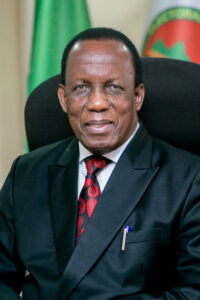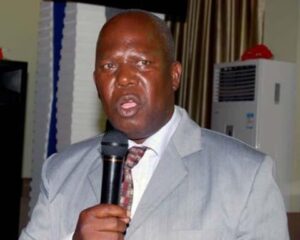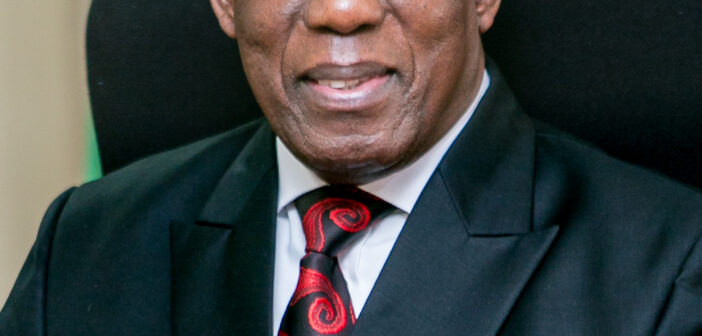Kavwanga E.S. Yambayamba, PhD, JP
November, 2022
Introduction
We need not emphasize that the Mambwe land is one of the least developed areas in Zambia. While there are many factors, the primary factor is that there has been no authentic traditional leadership at the level of Senior Chief for almost seven (7) decades now. Consequently, the Mambwe people have totally lost confidence in the system and they have nowhere to look up to. Unfortunately, people within the Royal family have vested interests; those who are in power want to remain in power at all costs. Those who are outside power want to get into it, regardless of whether they are within the succession line or not.
This brief is meant to provide facts about the real issues from the time Umwene Mambwe (Ben Lwanika Mayembe) was deposed from power by the colonial masters of those days. In order to have a complete story, however, the author has added a component of the beginnings of the Nsokolo Chiefdom. This is important for a clear understanding of the succession system put in place by the Nsokolo Royal Family. The facts compiled in this simplified paper are based on information from various sources, including:
i) People with institutional memory (i.e. human repositories) ii) Some members within the Royal Family
iii) Legal people who have been following the Nsokolo case for many years iv) Some old documents availed to the author
The author is not a member of the Royal Family, and therefore his only interest (as a subject) is to see that proper traditional authority is restored for the pride of the Mambwe people, and more importantly to see that development comes to the Mambwe land. Admittedly, there could still be some details that may have been missed in this article but what is important is that, for the first time, the facts have been laid bare and put straight, with no grey area anywhere. All interested and well-meaning Mambwe people should follow these facts properly and the truth will liberate everyone. The succession wrangles will be a thing of the past and we shall not need the courts of law or government to intervene.
So we begin the history from Changala Muluba. Changala Muluba was the first Senior Chief Nsokolo of the Mambwe people. He reigned from 1700-1750. Following his death, he was succeeded by his brother Mutende Ku Wanga. Mutende had no children and when he died, two bloodlines (lineages) emerged, that is of the two sons of Changala Mu Luba, namely, Mwimbe Kwi Ziya (or simply Mwimbe in short) and Nsipa Kwi Pembwe (or simply Nsipa in short). These became the alternating bloodlines to the Senior Chief Nsokolo Chieftainship. Mutende was therefore succeeded by Mwimbe Kwi Ziya. After Mwimbe died, he was succeeded by his young brother Nsipa Kwi Pembwe. As established by the Nsokolo Family Tree, we can look at these two Senior Chiefs as the ancestors of the Royal Family in as far as succession is concerned.
The successions as shown below tell the whole story. We see that when Nsipa died, he was succeeded by Nsokolo Wa Cisenga from the Mwimbe bloodline. Nsokolo Wa Cisenga was succeeded by Mukumbe Ku Ciya from the Nsipa bloodline. Mukumbe was succeesded by Malamba Ku Citundu, the son of Mwimbe. Malamba was succeeded by Mutale Wa Kalembe from the Nsipa bloodline. Mutale Wa Kalembe was succeeded by Funda Wa Cipoka from the Mwimbe bloodline.
There was some confusion in the succession during the tribal wars when the Bembas and Ngonis occupied some parts of the Mambwe land. Here we see that when Musanya Wa Mikinko (son of Mwimbe) died, he was succeeded by his own son, Wangwe Wa Mwela. This means the Mwimbe bloodline erred in the succession. Apart from this error, however, all was well all the way to Kamyalile Ku Cisenga (Nsokolo XII) from the Nsipa bloodline, passing it to Mwezi Mupya Pembamoto (Nsokolo XIII) from the Mwimbe bloodline. Kamyalile who died in 1898 and Pembamoto who died in 1932 could be considered as the ancestors of the modern times in the Nsokolo Royal Establishment. Ben Lwanika Mayembe (Nsipa bloodline) succeeded Pembamoto.
The Facts
1) In the Nsokolo Chiefdom (Senior Chief of the Mambwe people), there are two established lineages of the family tree from which Chiefs are supposed to be appointed. These are: (1) Mwimbe and (2) Nsipa. [Note: Some people also quote Pembamoto (from Mwimbe) and Kamyalile (from Nsipa) as bloodlines]. As per Mambwe Royal traditions and customs, the two lines are supposed to alternate in the succession.
2) Kamyalile (Nsipa bloodline) was the father to Ben Lwanika Mayembe (Umwene Mambwe) who was accused of actively participating in politics by the colonial government. This is the time when Africans were actively fighting for independence from the colonial powers. Ben Mayembe was consequently deposed and de-gazetted as Senior Chief of the Mambwe people in 1953. A restriction order was imposed on him and he was subsequently exiled to Chalele area (Chief Chakonta area) on the Chambezi River. Under the colonial rule, the implication of this restriction order was that one’s movements were restricted to a particular area only. The person was free to move about within that particular area but could not travel outside. Mwene Mambwe Lwanika Ben Mayembe was restricted in Chalele for 11 years but did not surrender the throes of power, and continued to be recognized by the Mambwe people as their Senior Chief Nsokolo. Ben Mayembe had several sons, among them Tresphore Mukumbe (T.M.) Nsokolo, George, Kelvin, Felix, Joseph and Yusto.
3) Pembamoto (Mwimbe bloodline) had 10 children, among the sons being Richard, Yolamu Chupa, Fraction Sisibeti (also known as Kasanzi), Thomas and Nowa (ya Si Chise). So these were the brothers to Ben Mayembe from the other bloodline. When Ben Mayembe was de-gazetted, the colonial government appointed Nathan Chela who was the Secretary of the Mambwe Native Authority, as Senior Chief Nsokolo. Nathan Chela was not part of the Nsokolo Royal family and, therefore, there was a protest from the Mambwe people. In trying to correct the situation, the colonialists appointed Yolamu Chupa who was heir to the throne except that it was not his time to be Senior Chief (since he was from the Mwimbe bloodline). Thus, while Chupa was gazetted by the colonial government, he was not recognized by the Mambwe people as their Senior Chief. The people referred to him as “chief of the government”. This scenario created two chiefs at the same time: one with the Instruments of Power (Mwene Wavilimba) and one without Instruments of Power but gazetted by government (Mwene Walupiya).
4) In 1965, the Independence Government (UNIP) lifted the restriction order on Ben Mayembe and he travelled back to Nsokolo village. However, the UNIP government did not correct the wrong created by the colonial government; instead they perpetuated the same by maintaining Chupa as the gazetted Chief. Chupa had consolidated his position by now and was not willing to step down.
But as far as the Mambwe people were concerned, Lwanika Ben Mayembe (Umwene Mambwe) was the rightful Senior Chief. He was the one holding the Instruments of Power (Ivilimba).
5) In 1970, Chupa died and was succeeded by his young brother Fraction Sisibeti Nsokolo (Kasanzi). Lwanika Ben Mayembe continued being Umwene Wavilimba while Sisibeti Nsokolo was the chief of the government (Umwene Walupiya). Naturally, Sisibeti Nsokolo felt a void within himself – ruling without the instruments of power!
6) Thus in 1982, Sisibeti Nsokolo sued Lwanika Ben Mayembe in the Mbala Magistrate’s court, claiming Ivilimba. Ben Mayembe did not live long after being sued, dying within the same year 1982. The court action by Sisibeti angered the Mambwe chiefs and traditionalists, and in 1983 they petitioned the government over it. Government advised the chiefs to convene a meeting to resolve the issue as a community. This was done, but while the meeting was going on, the Mbala police pounced on the them, arresting 12 chiefs and two (2) MPs. Chief Mpande and the two MPs were taken to court and were convicted for, allegedly, wanting to overthrow a gazetted chief. They, however, appealed and the case went for a retrial. The retrial Magistrate (Mr. Essau Elliot Chulu at the time, and now retired Judge) acquitted them and this was upheld by the High Court of Zambia.

Former Electoral Commission of Zambia (ECZ) Chairperson Essau Elliot Chulu
The High Court also upheld the Magistrate’s Court recommendation to appoint a Commission of Enquiry to look into the case. The Court also noted that state agencies were aware of what the problem in the Mambwe Chiefdom was, but deliberately did not inform the Head of State. The Commission of Enquiry as recommended by the courts of law has, however, not been appointed to date.
7) From the time Umwene Wavilimba (Lwanika Ben Mayembe) was removed from the throne by the colonialists, no real succession in the Mambwe Chiefdom has taken place. Only one bloodline (Mwimbe) has ruled the Mambwe people, but against their will. None of the chiefs, starting from Chupa to the present, has been handed the instruments of power.
8) In the year 2000, Sisibeti Nsokolo died and was succeeded by Martin Nsokolo, the son to Chupa. Martin lived for a very short time (barely a couple of months), dying in 2001.
9) Within the same year (2001), Emmanuel Kanono Nsokolo, also son to Chupa, succeeded Martin Nsokolo. In an attempt to normalize the Nsokolo Family tree succession, T.M. Nsokolo (from the Nsipa bloodline) sued Emmanuel Kanono in the High Court within the same year. In 2003, the case was concluded and the judgment went in favour of Kanono. Not satisfied with the judgment, T.M. Nsokolo appealed to the Supreme Court. Unfortunately, the lawyer handling the case did not file in the appeal within the stipulated time. Kanono did not live long after the High Court concluded the case, dying only in 2004. Realizing that the lawyer handling the case was, in fact, working against him, T.M. Nsokolo turned to another lawyer who, unfortunately, only filed in a record of appeal to the Supreme Court in 2008. The case was already “out of time”. Thus in 2010, the Supreme Court adjourned the case sine die.
10) In 2005, Christopher Nsokolo, son to Sisibeti succeeded Kanono. It would appear at this time that many members of the Royal family were not happy and wanted change. It was probably too much of the Chupa and Sisibeti family! But there were still selfish interests among some members. Recall that Chupa and Sisibeti had other brothers, among them being Nowa Nsokolo. Nowa’s children (and those connected to them), at this point, felt that it was their turn to be on the throne of the Mambwe Chiefdom. Hence, following the appointment of Christopher Nsokolo that year, Albert Zombe and five others who included Nowa’s children (Mwimbe bloodline), sued him in the Kitwe High Court. Concurrently, T.M. Nsokolo from the other bloodline (Nsipa) also sued the same Christopher in the Lusaka High Court.
11) In 2008, the Kitwe High Court found that Christopher Nsokolo was not selected in accordance with the Mambwe custom, tradition and practice and, therefore, ordered for fresh selection of the Senior Chief Nsokolo. Although Christopher Nsokolo filed in a notice of appeal, he failed to file in a record of appeal against the Judgement deposing him as Senior Chief Nsokolo.
12) In 2015, the Supreme Court quashed his notice of appeal (since he did not file in the record of appeal and time had lapsed) and upheld the High Court’s judgment. Thus, Christopher Nsokolo was de-gazetted.
13) Following the Supreme Court’s quashing of the notice of appeal and degazetting Christopher Nsokolo, the Selection College, as per order of the High Court, sat to select the new Senior Chief Nsokolo of the Mambwe people. Chief Mpande (now the late Dr. Matthias Mpande) chaired the process. This was the first time in more than six decades that the Mambwe Royal Establishment sat to perform the rituals that are supposed to be performed during the succession of the Senior Chief of the Mambwe people. At this particular time, the intention of the Mambwe Royal Establishment was to put the records straight, i.e. restore and normalise the Royal succession system. It was, therefore, important at this time to go back to the time of Mwene Mambwe (Lwanika Ben Mayembe) and install someone from that bloodline so that the Mambwes could have Umwene Wavilimba for the first time in more than 60 years. Yusto Nsokolo, son to Ben Mayembe, was, therefore, appointed to the throne.

Dr. Matthias Mpande as Chief Mpande
14) Surprisingly, in January 2016, the Mwimbe lineage (Albert Zombe, Rita Nachula and Cornelius) commenced another court action against the Chairman of the Selection College. The only logical interpretation in this court action was that within Pembamoto’s sons (Mwimbe bloodline), it was felt that the Chupa and Sisibeti families had dominated the throne, side-lining the other children. It was, therefore, time for the others as well to rule! We see here that it became a fight within the Pembamoto lineage, and with no regard to the established succession system. It is important at this time to say one important thing about Nowa. Available evidence shows that Nowa had committed suicide by shooting himself after he shot the wife, Nakanyika. According to “Intambi zya Cimambwe”, any member of the Royal Family who commits suicide closes the door for his children. They automatically fall off the succession line. But in this particular case, we see Nowa’s side pushing for the throne.
15) Back to the court case, an inter-parte hearing was called in the same year (2016), and the hearing was concluded, with Judge Katenekwa presiding over the case. The judge promised that he would soon make the ruling over the same. To date, there has been no ruling. Thus, the matter is still before the Kitwe High Court. Complaints have been lodged to the Judicial Complaints Commission, the Chief Justice and the Attorney General, but no answers have been provided.
Conclusion
The conclusion is that the Mambwe people are stuck, and for as long as these wrangles continue, we do not expect to see any meaningful socioeconomic development in the Mambwe land. The ongoing court cases right now are very unlikely to resolve the succession mess in the Mambwe Royal Establishment. The simple reason is that there are vested interests in the cases, but also the courts cannot really determine who should be the rightful chief of the Mambwe. There is enough evidence for this latter conclusion, as shown below:
a) When Tresphore Mukumbe Nsokolo (Nsipa bloodline) sued Emmanuel Kanono in the High Court in 2001, the judgment went in favour of Kanono. There was an appeal by Tresphore Nsokolo to the Supreme Court but the case was adjourned sine die (see clause 9).
b) In 2005, Christopher Nsokolo (Mwimbe bloodline) who took over from Kanono was sued by Albert Zombe and five others in the Kitwe High Court and also by Tresphore Mukumbe Nsokolo in the Lusaka High Court. In 2008, the Kitwe High Court determined that Christopher Nsokolo had not been selected in accordance with the Mambwe custom, tradition and practice and therefore ordered for fresh selection of Senior Chief Nsokolo. What we see here is that the same court that had determined that Emmanuel Kanono (Mwimbe bloodline) was correctly installed, determined that Christopher (also from the Mwimbe bloodline) was not correctly installed. Christopher was subsequently degazetted. Anyhow, the court, at this time, ordered that the selection of the new Senior Chief, going forward, should be done in accordance with the Mambwe custom, tradition and practice.
c) Following this judgment and order, the Mambwe Royal Establishment sat to select the new Senior Chief Nsokolo of the Mambwe people. Chief Mpande (now the late Dr. Matthias Mpande) chaired the process. The intention at this time was to put the records straight, i.e. restore and normalise the Royal succession system after more than six decades of confusion. Yusto Nsokolo (Nsipa bloodline) was, as expected and rightly so, appointed to the throne.
d) But surprisingly, the Mwimbe lineage (Albert Zombe, Rita Nachula-Twumasi and Cornelius) commenced another court action against the Chairman of the Selection College. And this action went back to the same High Court that had ordered that
the Selection College follows the customs and practice of the Mambwe people! Even after the inter-parte hearing in 2016, to date the matter is still before the Kitwe High Court.
The point of emphasis with regard to the court process is that whatever judgment the court passes, those who are not satisfied will appeal or file in an injunction. At least this is what we have seen over the many years that the case has been dragging. What this means is that only the Mambwe people themselves can resolve these matters. But what the members of the Royal Family should realize is that Chieftaincy is an institution and that the subjects are the real owners of the institution. The subjects have a stake in the traditional governance system, and they are entitled to play a role in the selection and acceptance of their new Chief. In fact, it would appear in this particular case that a point has been reached when the subjects need to take action through a petition.
However, there is still room for the members of the Nsokolo Royal Family to halt their court actions and come together, in the presence of some ordinary subjects, and discuss genuinely from the bottom of their hearts, and agree to move in the right direction. With the facts laid straight in this document, there is no real issue to argue about. If the members of the Royal Family are not willing to come together, the subjects (who are the owners of the Chieftaincy) will have no option but to take action through a petition.
THE END




